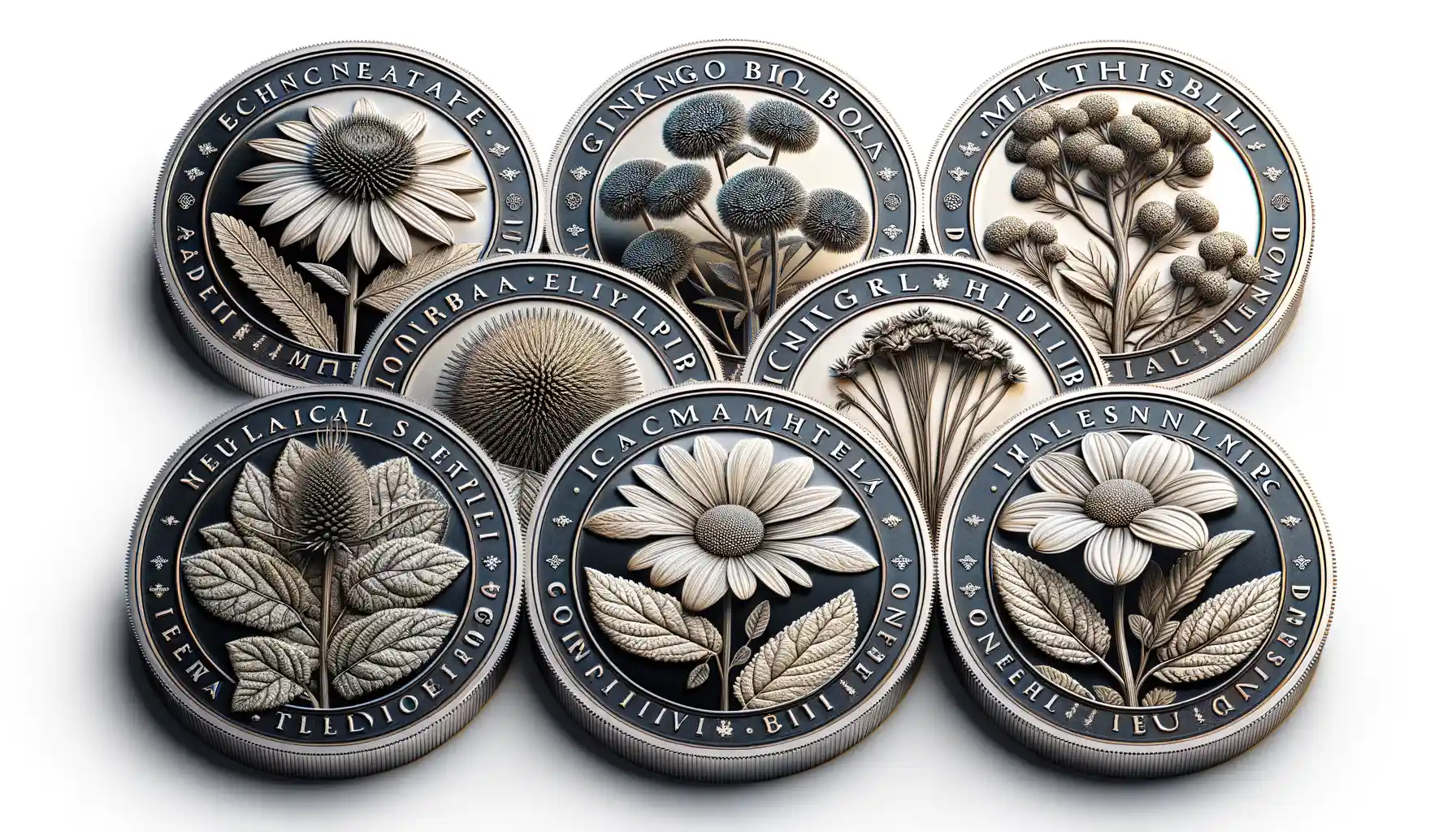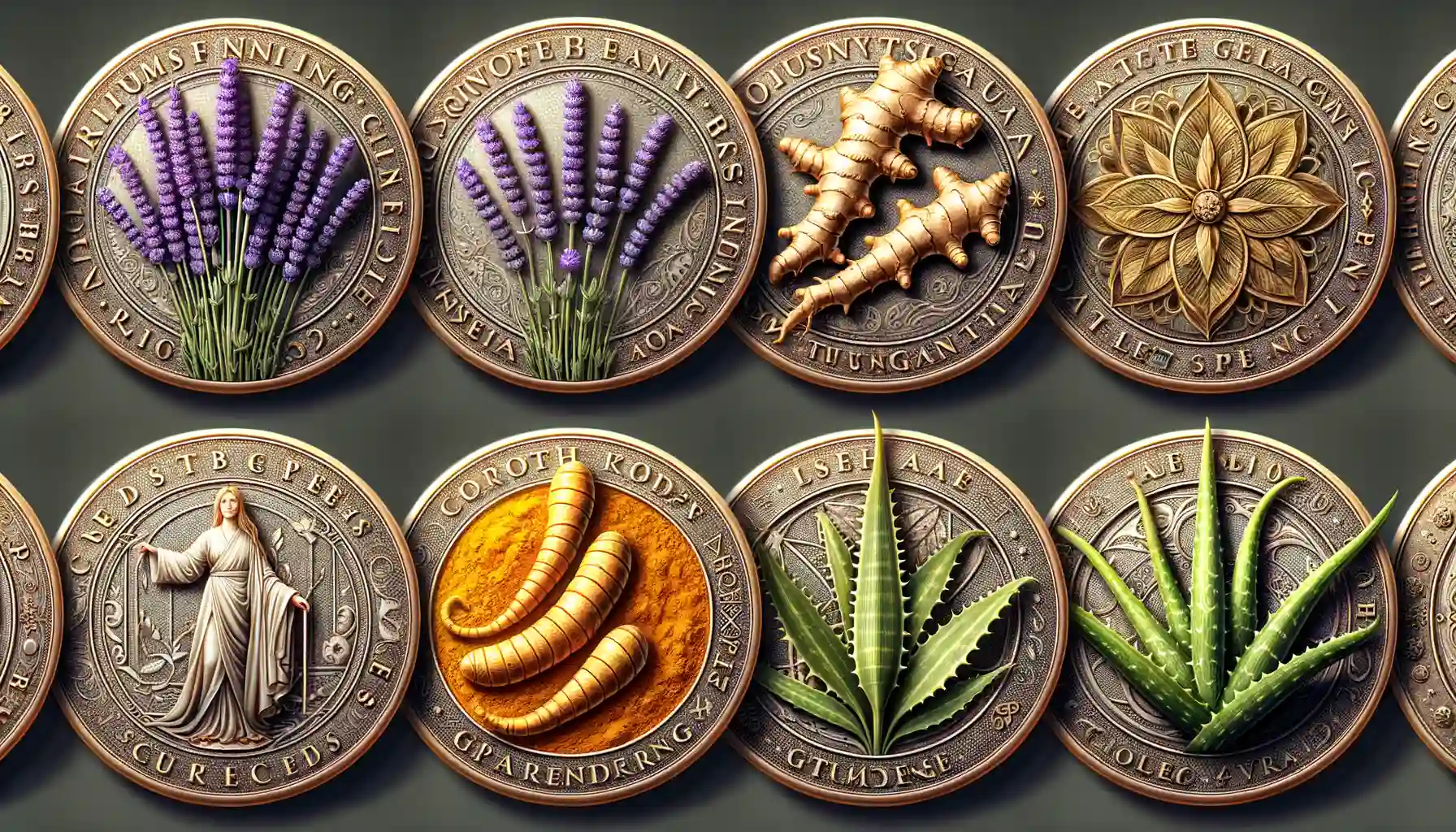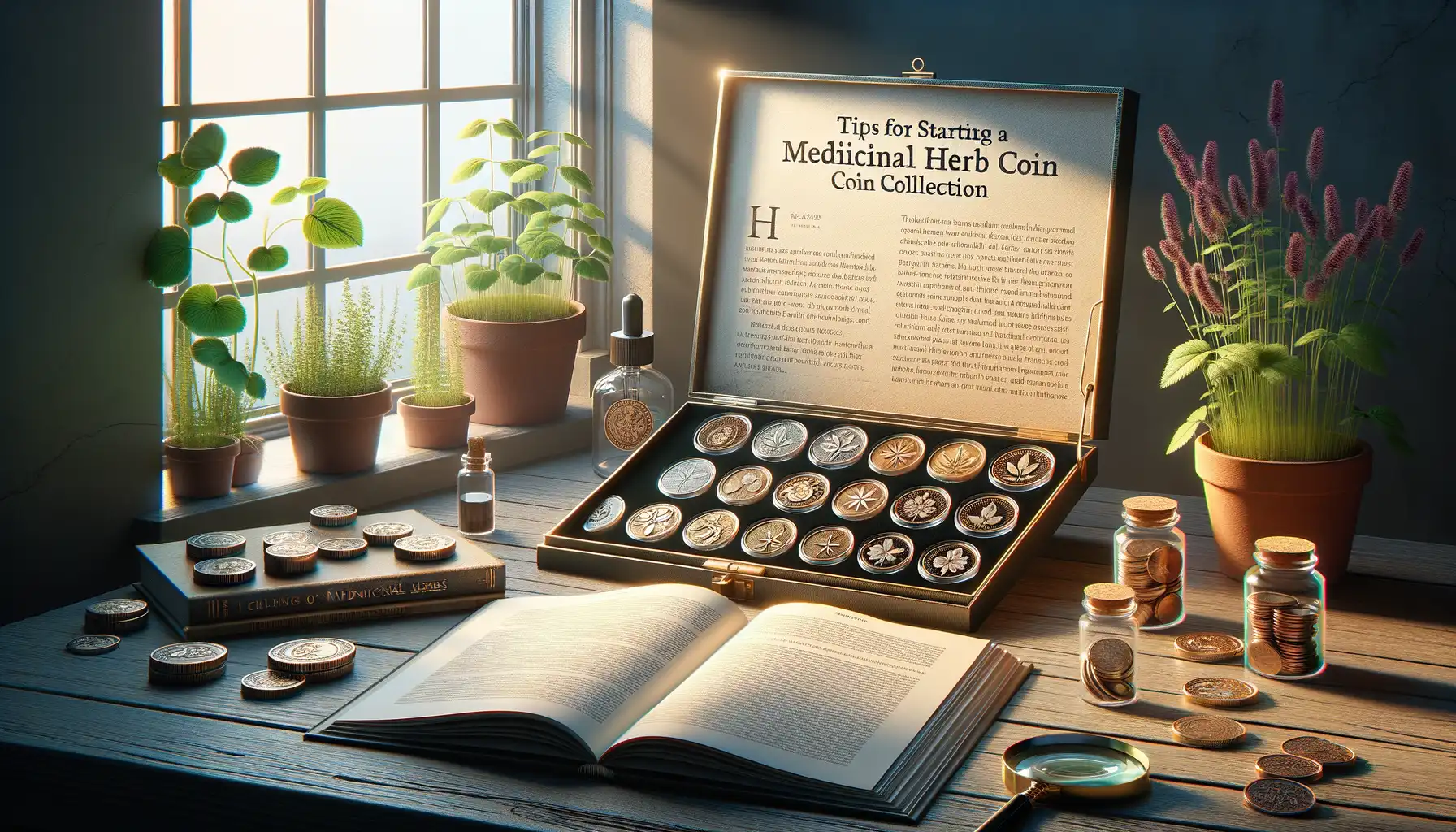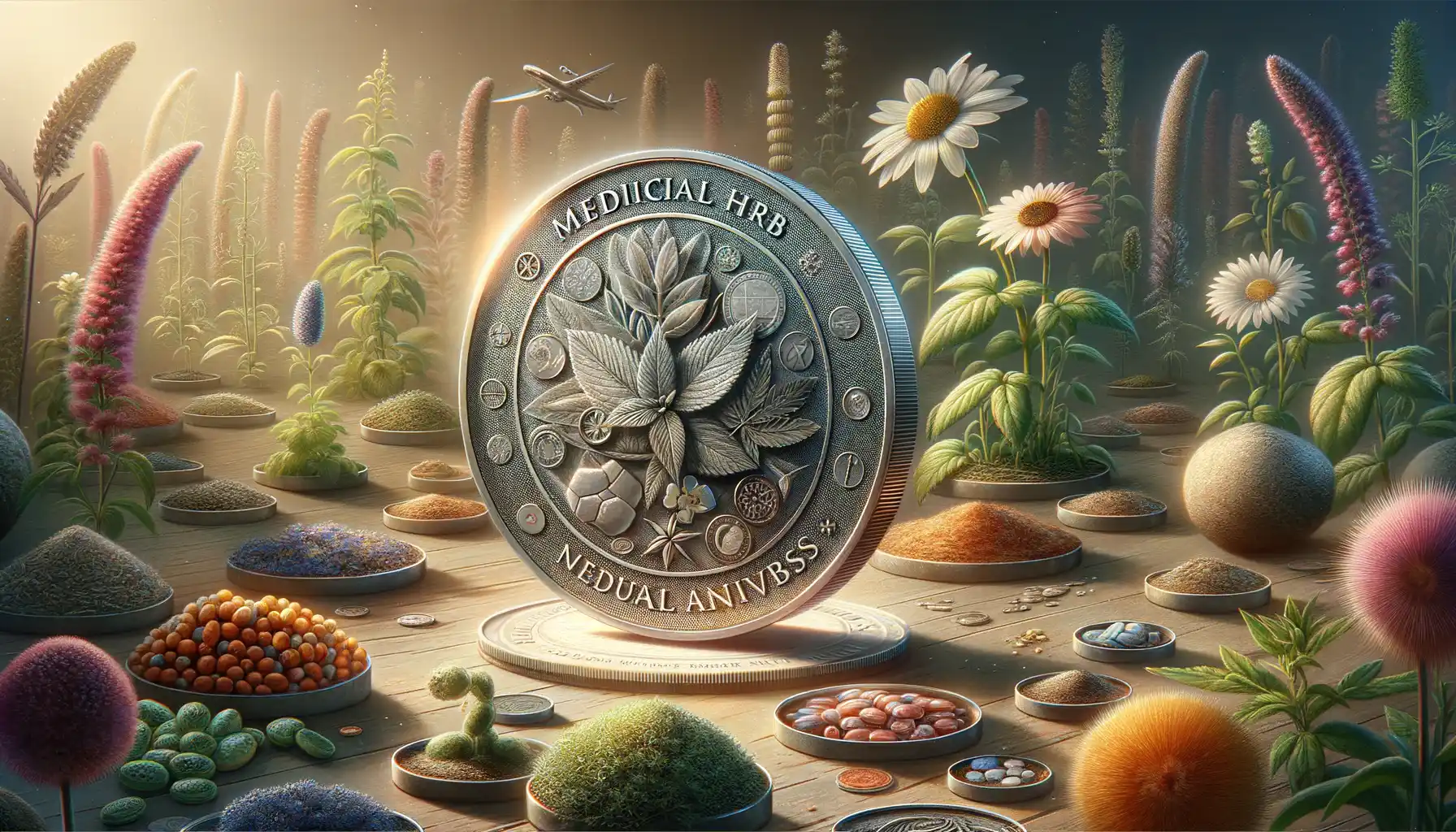The History and Significance of Medicinal Herb Coins
The Roots of Medicinal Herb Coins in History
Picture this: a small, shimmering coin in your hand, etched with the delicate form of a medicinal herb. It’s not just a piece of metal; it’s a portal to ancient times when plants were humanity’s first pharmacy. Long before modern medicine, civilizations like the Greeks, Chinese, and Egyptians revered herbs like mint, sage, and ginseng—turning them into symbols of healing and vitality. Coins featuring these plants weren’t merely currency; they carried the essence of survival, hope, and even spiritual connection.
Fast forward centuries, and these coins now serve as tiny storytellers. Did you know that during the Middle Ages, herbal remedies became so valuable that some coins depicted garlic to symbolize protection against disease? Or that the ancient Romans minted coins adorned with plants like myrtle, linking them to health and prosperity? Each design whispers tales of forgotten cures, cultural beliefs, and the irreplaceable bond between nature and human life.
Why Medicinal Herb Coins Hold Emotional Significance
So why do these coins tug at the heartstrings of collectors? It’s not just nostalgia—it’s connection. Imagine holding a coin engraved with lavender, a plant mothers once used to calm restless children. Or a depiction of wild thyme, cherished for its antibacterial properties during wartime scarcity. These coins don’t just represent history; they echo personal stories of resilience and care passed down generations.
Some reasons they stand out:
- Cultural pride: Many nations feature native medicinal herbs on their coins, celebrating local traditions.
- Symbolism: Herbs like chamomile symbolize peace, while rosemary evokes memory and protection.
- Artistic beauty: The intricate designs often rival botanical illustrations in their detail.
Top Medicinal Herbs Featured on Collectible Coins

The World’s Most Fascinating Medicinal Plant Coins
Step into the world of numismatics, where art, history, and nature collide in the most enchanting way. Coins featuring medicinal herbs are like tiny, portable museums—each one a story waiting to be told. Have you ever examined a coin adorned with the delicate leaves of Echinacea, known for boosting immune systems for centuries? It’s not just currency; it’s a tribute to healing traditions passed down through generations.
Take the European silver coins featuring St. John’s Wort, its golden blossoms carefully etched to honor its use in calming troubled minds. Or how about Japan’s vibrant depiction of Gingko Biloba, the “living fossil” revered for its brain-boosting properties? These designs are more than decorative—they’re emblems of the human quest for health, encoded into shiny discs of metal.
- The Swiss commemorative coin celebrating Edelweiss, famed for its medicinal and symbolic ties to resilience.
- India’s Ayurvedic-inspired coin designs showcasing Tulsi, or holy basil, a plant central to their traditional remedies.
Every detail on these coins—from finely engraved petals to shimmering roots—reminds us that plants have always been our first pharmacy, and now, our miniature monuments.
How Medicinal Herb Coins Reflect Cultural Heritage

Bridging Nature and Tradition Through Coin Design
When you hold a medicinal herb coin in your hand, you’re not just admiring its shimmering surface—you’re cradling a piece of cultural storytelling. These coins go far beyond their monetary value. They are miniature canvases where nature and heritage intertwine, preserving the essence of ancient practices for future generations.
Take, for instance, the image of a sage leaf etched into a coin. It’s more than pretty engraving; it whispers stories of old herbalists crafting remedies in village markets or monks tending to healing gardens in secluded monasteries. Across continents, these designs showcase the deep bond humans have shared with plants—from the medicinal power of ginseng in East Asia to the revered willow bark, the world’s first aspirin, in European traditions.
- Some coins depict herbs entwined with patterns that mimic traditional textiles or pottery designs.
- Others pair botanical imagery with symbols of local customs, like harvest festivals or ancient scripts.
These details aren’t just decoration—they anchor us to a shared past, reminding us how cultures across the globe rooted their well-being in the wisdom of flora.
A Global Language of Healing and Heritage
Imagine traveling through time without ever leaving your collection box. Medicinal herb coins reveal how plants like lavender or rosemary became universal symbols of comfort and care. A French coin might feature lavender as a nod to Provence’s fragrant fields, while an Indian design could honor turmeric, the golden backbone of Ayurvedic medicine.
Each design tells a unique yet global story: the healing powers of nature transcend borders. Cultures that likely never met still cherished the same plants for similar remedies—coins give this silent connection a voice. In a way, collecting these coins connects you not only to history but to the universal human quest for health, balance, and beauty rooted in the natural world.
Tips for Starting a Medicinal Herb Coin Collection

Where to Begin Your Medicinal Herb Coin Adventure
Starting a collection of medicinal herb coins feels like stepping into a secret garden—the possibilities are endless, yet deeply rewarding. First, don’t let the sheer number of coins out there intimidate you. Instead, focus your efforts with these tips:
- Pick a theme: Do you adore the elegance of lavender or the mystique of ginseng? Start with a herb that speaks to you—something you’d reach for in a tea blend or admire growing wild.
- Set a budget: Rare herb coins can stir up bidding wars, so decide early how much you’re willing to invest. It’s not about breaking the bank—some gorgeous pieces come at surprisingly affordable prices!
- Know your mintmarks: Some mints, like the Royal Canadian Mint or Monnaie de Paris, are known for their exquisite herbal designs. Learn to recognize these tiny details—they can make all the difference.
Making Collecting Feel Personal
Here’s the magic—you’re not just gathering coins; you’re weaving stories. Picture yourself holding a coin depicting Echinacea, remembering its role in boosting immunity during harsh winters. Or maybe you find a delicate engraving of aloe vera, tied to ancient Egyptian skincare rituals. Display them proudly in a wooden case or an album, letting each coin tell its own tale.
A quick insider tip? Trade or swap with fellow collectors in online groups! With each trade, you add not just a coin, but also someone else’s story to your journey.
The Future of Medicinal Herb Coins in Numismatics

Where Art, Nature, and Numismatics Intertwine
The world of numismatics is ever-evolving, and coins featuring medicinal herbs are poised to thrive in ways that might surprise even seasoned collectors. These coins combine the precision of craftsmanship with the organic beauty of nature, creating a bridge between ancient wisdom and modern appreciation. Imagine owning a coin engraved with the delicate leaves of ginkgo biloba, whose history stretches back millions of years, or the intricate blossoms of echinacea, symbolizing healing and resilience. Aren’t these just pocket-sized works of art?
What sets these coins apart is their ability to speak across cultures and time. As interest grows in holistic medicine and herbal remedies, these coins evoke a sense of timelessness. They’re not just collectibles—they’re conversation starters, miniature storytellers whispering secrets of past cures and rituals.
- Emerging designs could feature rare or endangered herbs, spotlighting conservation efforts.
- Advances in coin technology—think 3D imaging and color printing—are already transforming how we experience these botanical masterpieces.
A Growing Marketplace for Green Enthusiasts
Let’s face it: the market for coins tied to themes like wellness and sustainability is heating up faster than your favorite herbal tea. Younger collectors, drawn to meaningful narratives, often see medicinal herb coins as more than shiny trinkets—they’re symbols of a world people are striving to preserve.
And here’s an exciting twist: partnerships between mints and botanical gardens could birth limited-edition series, blurring the line between hobby and philanthropy. Imagine coins embedded with small, preserved pieces of real herbs (yes, this is already being explored!) or augmented reality features where scanning the coin unveils traditional remedies. The horizon feels boundless, doesn’t it?
